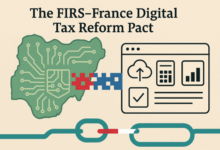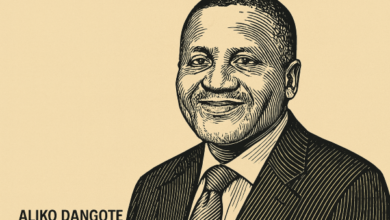World Bank Cuts 2025 Growth Forecast to 2.3% Amid Mounting Uncertainty and Trade Friction

The World Bank has trimmed its 2025 global growth forecast to 2.3%, sounding a fresh alarm for policymakers and investors amid escalating trade tensions, policy ambiguity, and waning investor confidence. This projection, released in the Bank’s mid-year Global Economic Prospects report, is nearly half a percentage point lower than earlier estimates—and represents the slowest pace of non-recessionary global growth since the 2008 financial crisis.
The Weakest Decade Since the 1960s
If these forecasts hold, the average growth for the first seven years of the 2020s will register as the weakest for any decade since the 1960s. The consequences of this trajectory are far-reaching: from undermining global poverty reduction targets to derailing efforts by developing economies to catch up with richer counterparts.
According to Indermit Gill, the World Bank Group’s Chief Economist and Senior Vice President for Development Economics, the global economy is increasingly split. “Outside of Asia,” Gill lamented, “the developing world is becoming a development-free zone.”
That’s no hyperbole. Developing economies, once heralded as the engine rooms of global growth, are now facing stagnation. The numbers tell a sobering story:
- Growth in the developing world has fallen from 6% in the 2000s, to 5% in the 2010s, and now below 4% in the 2020s.
- Global trade, a historical driver of growth, has slowed from an average of 5% annually in the 2000s to less than 3% today.
- Investment has weakened while public and private debt has ballooned to record highs.
Regional Divergence and Downward Revisions
Nearly 70% of global economies—across regions and income groups—have seen their 2025 growth forecasts slashed. Among developing economies, nearly 60% are expected to decelerate further, with an average growth of 3.8% in 2025, inching only slightly up to 3.9% by 2027.
For low-income countries, growth is projected at 5.3% in 2025, but this too is a downgrade of 0.4 percentage points from prior projections. These economies face rising headwinds from trade barriers, labor market tightness, and inflationary pressures—forecasted at 2.9%, still elevated above pre-COVID norms.
Even more concerning is per capita income growth, forecast at just 2.9% in 2025—1.1 percentage points below the 2000–2019 average. At this rate, many developing countries (excluding China) may need up to 20 years to return to their pre-pandemic growth paths.
What’s Driving the Downturn?
Key culprits behind this subdued outlook include:
- Rising protectionism and tariff escalations across major economies, which are choking global trade and capital flows.
- Geopolitical fragmentation, including unresolved conflicts and tensions between global powers.
- Policy uncertainty, particularly around fiscal reforms, energy transitions, and regulation in major economies.
What Must Be Done?
The World Bank report on growth forecast doesn’t just diagnose the malaise—it prescribes a path forward.
To reverse the slide and build resilience, developing countries must act decisively:
- Diversify trade partnerships and reduce reliance on a narrow set of export destinations.
- Mobilise domestic revenue, especially through fair tax systems and improved compliance.
- Prioritise pro-poor and growth-oriented spending, especially in health, education, and infrastructure.
- Reform business environments to unlock private investment, create jobs, and support productivity gains.
- Realign workforce skills with emerging market demands—especially in tech, green industries, and services.
Importantly, the report highlights that resolving global trade disputes and halving current tariffs could provide a modest but meaningful uplift of 0.2 percentage points to global growth over 2025–2026.
The Bigger Picture: Global Solidarity Required
With rising fiscal constraints and fragile investor sentiment, global cooperation is no longer optional—it is essential. The report calls for strengthened multilateral support, including concessional financing, debt relief, and targeted aid for conflict-affected and climate-vulnerable nations.
As the 2020s approach their midpoint, the race to reset the global growth engine is on. For emerging and frontier markets, the message is clear: without decisive reform and robust partnerships, this could become a lost decade.
For Nigeria and other African economies banking on demographic dividends and energy transition gains, the time to implement bold structural reforms is now—or risk being locked out of the next global growth wave.










